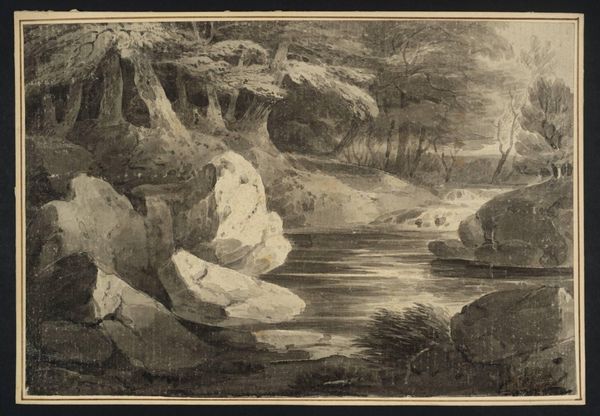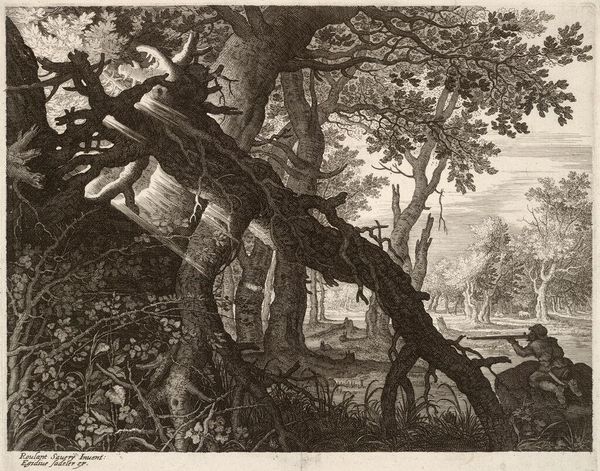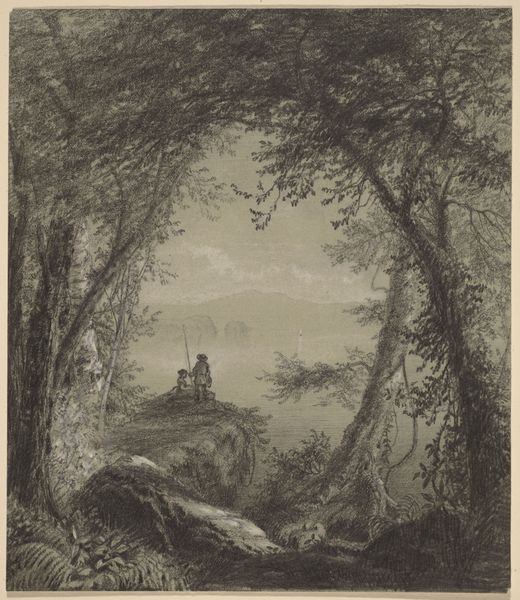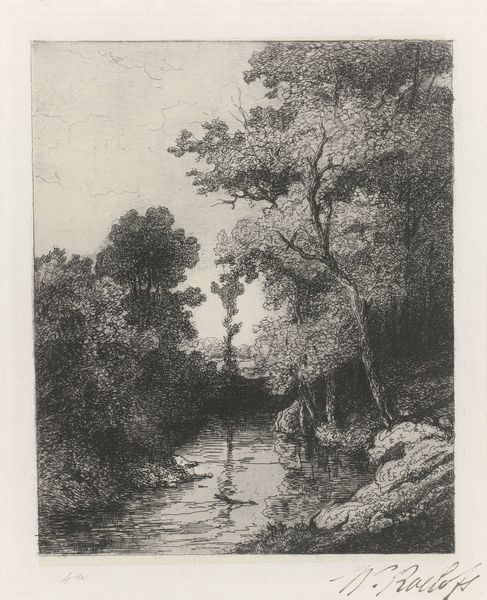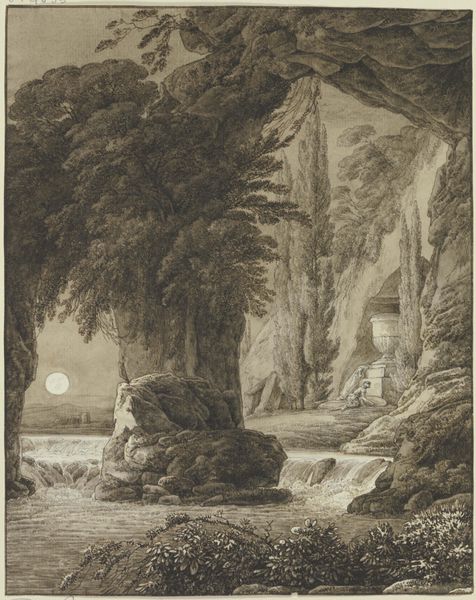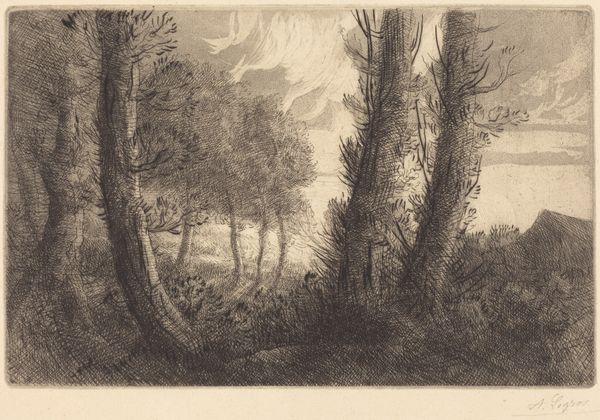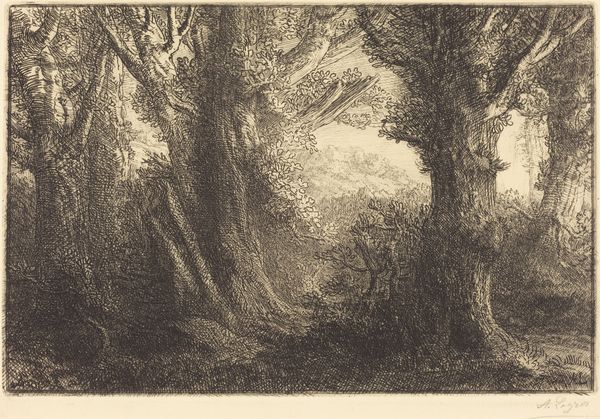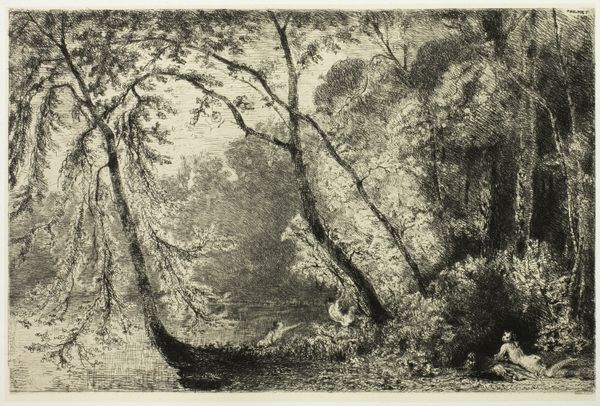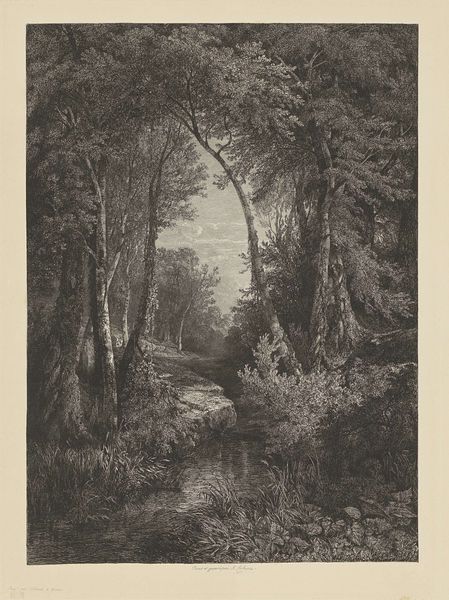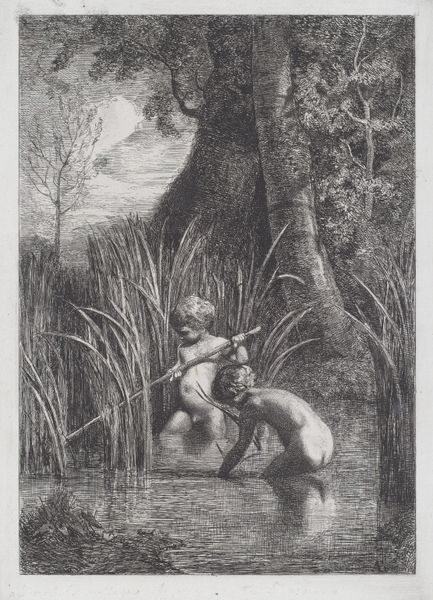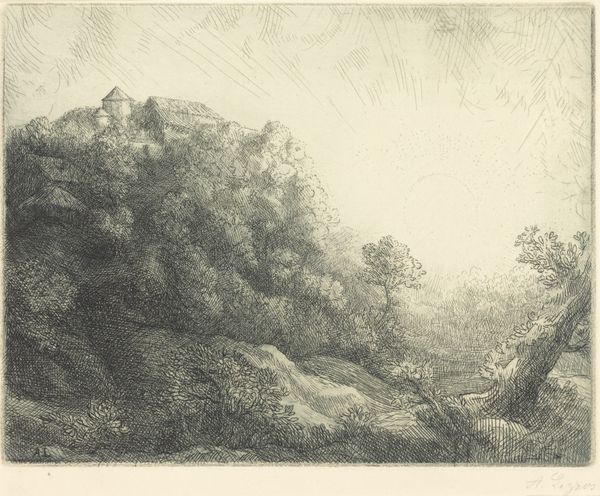
print, etching, mezzotint
#
tree
# print
#
etching
#
landscape
#
figuration
#
nature
#
form
#
tree
#
england
#
romanticism
#
mezzotint
#
surrealism
#
line
#
nude
Dimensions: 7 11/16 x 10 7/8 in. (19.53 x 27.62 cm) (plate)
Copyright: Public Domain
Editor: Here we have John Martin's "Eve at the Fountain," an etching and mezzotint from 1824-1826. It’s…striking. Eve seems almost fragile against such a grandiose landscape. How do you interpret this work in relation to its time? Curator: The sublime landscape was, of course, a key preoccupation in Romantic art, which this is an excellent example of. Martin, like others of his era, used landscapes to explore themes of power and the place of humanity within a larger, sometimes overwhelming, natural order. Think of the sociopolitical context. The Industrial Revolution was radically transforming English society, and artists like Martin were grappling with the implications of progress on notions of human dignity and the relationship with the natural world. Does the scale of the landscape dwarf Eve, or is she an integral part of it? Editor: I see your point. It's almost as if she's dwarfed and empowered simultaneously. So, is Martin critiquing the effects of industrialization or celebrating nature's dominance? Curator: Perhaps a bit of both. Romantic artists weren't simply offering idyllic visions of nature. Instead, they acknowledged a more complex dynamic between humans and the natural world. Consider the printmaking medium too, etching and mezzotint. What accessibility did this medium provide to the masses and how would you say this contrasts with other landscapes of that time? Editor: That's interesting, I didn’t initially think about that! Creating prints makes it easier for people to have access and connect with these images compared to grand oil paintings displayed only in museums and homes of the wealthy. I learned that works like these encouraged public awareness. Curator: Precisely. And considering print's capabilities for wider circulation of his image, it could further engage the viewer and allow them to consider its cultural messages in a broader sense. Now, do you feel differently about this work? Editor: Absolutely. I now realize this artwork speaks not only about an individual but also to contemporary social and political ideas in its historical context. Curator: Precisely. Analyzing historical context illuminates deeper levels of meaning.
Comments
No comments
Be the first to comment and join the conversation on the ultimate creative platform.
